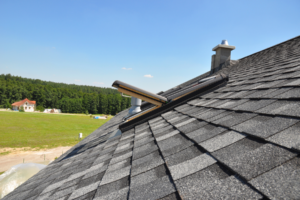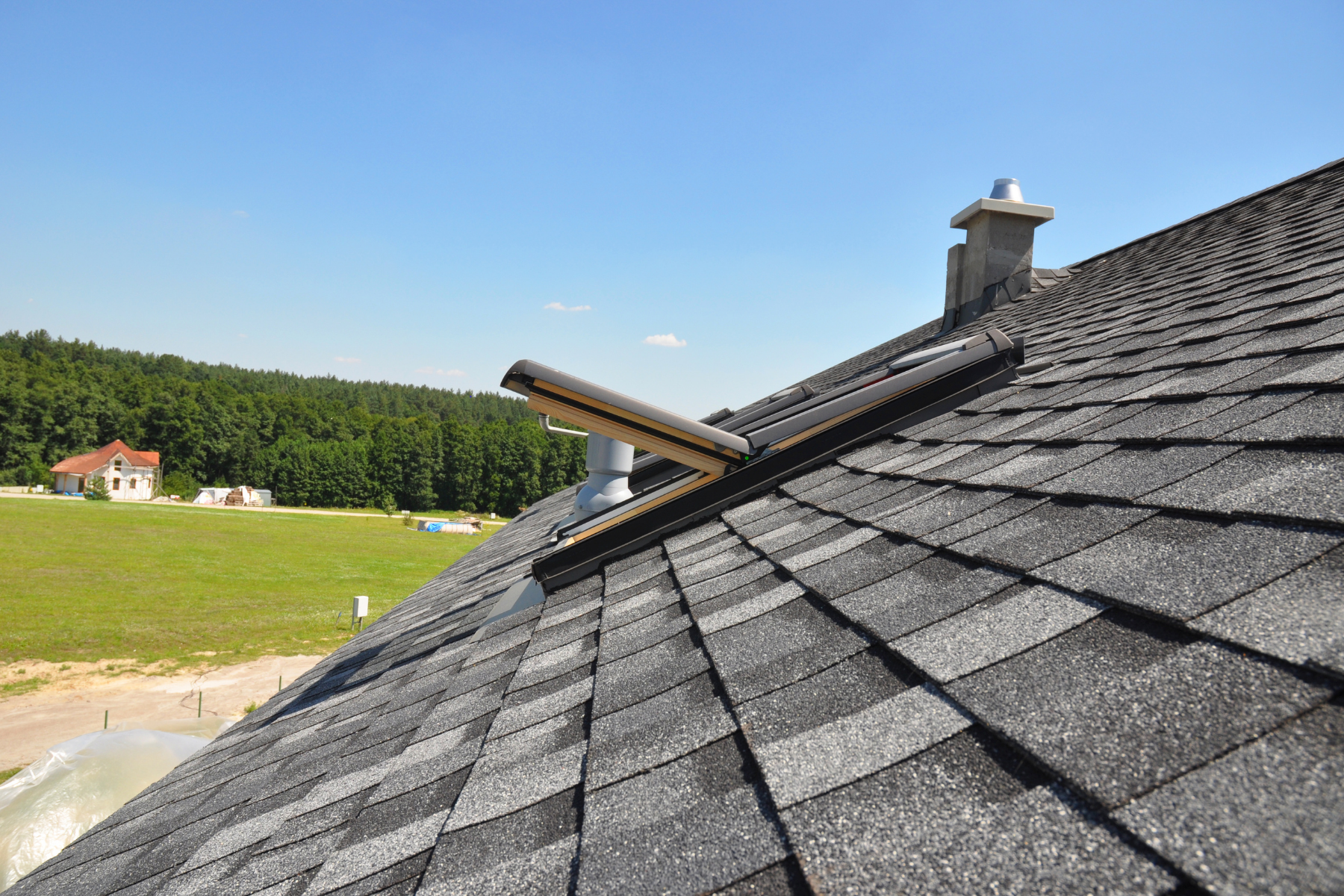Financing Options When Buying a New Roof or Repairing an Old Roof
Posted by DigitalVue No Comments on Financing Options When Buying a New Roof or Repairing an Old Roof Construction, Roofing
Financing Options When Buying a New Roof or Repairing an Old Roof
The long list of responsibilities that come with being a homeowner can be expensive and intimidating like financing a new roof. A healthy home often means running a tight ship on the various aspects that bring the house together: landscaping, interior design, plumbing, roofing, heating, ventilation, and air conditioning to name a few key components. Some homeowners may have luck on their side, with repairing and replacement needs arising rarely. Some homeowners may not be so lucky, with critical aspects of the home requiring significant repairs or replacements when you least expect it.

When your roof gets damaged, whether due to depreciation over the roof’s lifetime, or an untimely natural disaster, a new roof installation or substantial roof repair is a top priority; unfortunately, homeowners may find the expense to address their roofing needs untimely. However, just because a large home improvement bill is now staring down the bank account does not mean homeowners need to worry. There is no need to forego essential repairs or replacements, which means no cutting corners. In this article, we will discuss the financing options available to homeowners when buying a new roof or repairing an old one.
Table of Contents:
-
Why Finance When Buying a New Roof or Repairing an Old Roof
-
Financing Options When Buying a New Roof
-
Financing Options When Repairing an Old Roof
-
Professional, Local Roofing Contractors in Denver, Colorado
Why Finance When Buying a New Roof or Repairing an Old Roof
Repairing an Old Roof
Rising costs for labor, surging demand for the price of home material goods, and high-grade roofing materials are making roof repairs pricey. According to the Home Advisor, the national average roof repair cost is $1,018. More minor roof repairs may cost between $150 to $400, and the hourly labor rate is around $45 to $75 per hour. These rising labor rates can cause friction for homeowners not expecting a storm to damage their roof. For budget-minded and well-capitalized homeowners, these costs may not be too troubling. However, nature works on its own time. You have yourself a situation worth financing.
Installing a New Roof
While the average cost of repairing a new roof may be below the $2,000 cost threshold, Installing a new roof is a costly home improvement project. The typical cost to install a new roof or a roof replacement may range anywhere from $5,000 to $12,000, depending on the roofing materials, labor cost, and the home’s location. Even for homeowners with emergency funds or a proper nest egg of funds, the average price of a new roof installation can leave homeowners financially unprepared.
Why Finance When Buying a New Roof or Repairing an Old Roof
Understanding what financing options are available for homeowners is essential. Financing can allow you to purchase a new roof without sacrificing the quality of roofing materials or being limited to inadequate roofing contractors. It can give you peace of mind while navigating the various budgeting and contracting rates.
Financing Options When Buying a New Roof
Here are financing options available for new roof installation or roof replacement projects.
Home Equity Loan
The home equity loan, which is widely known as a second mortgage, is a loan that utilizes the portion of your home that you own outright as collateral on a loan that is paid back in fixed monthly payments. The loan repayment terms can generally last from five to 30 years.
Lenders calculate home equity loans by first calculating the home equity available in your home and deducting this amount from the home’s current market value. For example, a home’s current market value is $250,000. The homeowner owes $100,000 on the house, so the home equity equals $150,000.
Now lenders typically only lend up to 85% of the home’s value, less the outstanding mortgage balance. Using the previous example, the $250,000 home would qualify for a home equity loan of $212,500 ($250,000 x 85%) less the remaining mortgage balance of $100,000 equaling $112,500. In this example, the homeowner would max out the home equity loan at $112,500. As with all forms of borrowed debt, the home equity loan comes with an interest rate. Interest rates on home equity loans are usually fixed compared to other options on this list.
The downsides to this financing option are the lengthy approval process of the loan and the risk of using your home as collateral for the cash. Failure to make payments on the loan could result in the loss of the property.
Home Equity Line of Credit
A home equity line of credit, or a HELOC, uses home equity as collateral. Like a home equity loan, a HELOC allows access to a maximum of 85% of the home’s value, less the remaining balance on the mortgage. The critical difference between a home equity loan and a HELOC is this: a Home Equity Loan is a lump-sum loan. In contrast, the HELOC establishes a revolving credit account that functions much like a credit card.
The draw period, or the time that HELOCs allow you to write checks or utilize a debit card and make payments against the account’s spending limit, can benefit homeowners. During this period, homeowners can pay down the balance as quickly or as slowly as they see fit, so long as they meet the monthly minimum payment requirements. After the draw period ends, the homeowner must pay off outstanding balances in a lump sum or on a fixed monthly payment schedule.
HELOCs usually have variable interest rates and may also feature low promotional rates for the first 12 months. After the 12 months, borrowers may see significant annual increases in the rates on the HELOC, depending on the financial institution. These rate hikes are something for homeowners to note, as the HELOC cost can increase over the credit account’s lifetime compared to the first 12 months.
Paying with Insurance
Regardless of mortgage payments, all homeowners must have homeowners’ insurance. The standard homeowners’ insurance policy provides coverage that offers repair or replacement for your home in the event of damage. This coverage protection of the home includes protection from financial loss due to fire, smoke, theft, vandalism, or damage from a weather event such as lightning, wind, or hail.
Insurance companies will offer two types of homeowners insurance policies: a cash value policy or a replacement cost policy. As the name implies, the second type of policy, the replacement cost policy, often pays the actual cost to repair or replace your home. A massive win for homeowners is when their homeowners’ insurance will cover a good portion of the cost of replacing a roof when the damage is unrelated to normal wear and tear. Additionally, your roofing contractor may work directly with insurance companies to ensure a seamless roof improvement.
FHA 203(k) Loan
An FHA 203(k) loan is a mortgage program issued by the Federal Housing Administration through which homebuyers can finance the purchase and rehabilitation of a home with a single mortgage. This type of loan is an excellent option for homeowners who may lack sufficient equity in their homes to utilize a home equity loan or a HELOC. More applicably speaking, current homeowners can refinance their mortgage and make home improvements.
Two types of 203(k) loans for a new roof or roof repairs offered are:
- Limited 203(k) Mortgage – Covers repairs costing up to $35,000, sufficient for most roof replacement projects.
- Standard 203(k) Mortgage – Typically, Standard 203(k) loans get reserved for significant renovation or remodeling projects. The caveat is the loan requires the use of 203(k) consultants to oversee the home rehabilitation process from estimate to completion. This consultant will have fees associated with hiring and retaining, must serve as a liaison between the contractor, homeowner, and lender, and must submit the appropriate paperwork to the FHA.
Personal Loan
Personal loans are a great financing option for homeowners with good or excellent credit scores. Personal loans may be taken and used for virtually any purpose and often feature lower interest rates than those offered by credit cards. The type of lender a homeowner decides to go with will determine the amount of money the personal loan will be. The average range of a personal loan is $1,00 to $50,000. Homeowners may obtain personal loans from banks, credit unions, and online lenders. Once you know the cost of new roof installation or replacement, shop for different lenders to ensure you obtain the best rate.
Financing Options When Repairing an Old Roof
The financing options available to homeowners for new roofs are also available for roof repairs. However, given the lower dollar threshold for the repair cost, only those with substantial savings and good credit should utilize options like home equity or personal loan. Here are a few financing options more appropriate for roof repairs.
Using a Credit Card
This financing option is arguably less favorable than other options. The average APR, the annual percentage rate or the interest rate of credit cards, is usually in the double digits for most financial institutions. To be clear, the APR is the price you pay for borrowing money on this line of credit. Credit cards are usually the last resort for homeowners needing roof repairs.
If you can pay off your balance in full from your roof repair within 12 to 18 months, utilizing a new credit card introductory rate of 0% APR (or another credit card with a promotional period featuring little to no interest) may be the solution. However, be wary that any balance remaining past the promotional period will be subject to a higher APR rate.
Paying With Insurance
Insurance is still an excellent option for homeowners only considering a roof repair. As noted previously, most homeowners insurance will cover roof repairs and new roofs, and it is always the best-recommended option.
Professional, Local Roofing Contractors in Denver, Colorado
Roofing Systems is Denver’s premier storm damage repair contractors. We have provided local homeowners comprehensive services to maintain their homes. With over 14 years of experience in the industry, our team of fully licensed and insured roofing contractors can provide you with comprehensive storm damage repair services. Proudly serving the front range since 2010 with an A+ BBB rating, we are here to help! Correct any damage your home or business has suffered in a recent storm in Denver, Colorado, with Roofing Systems.
Recent Posts
7 Great Commercial Roofing Systems You Should Know About
Learn About Asphalt Composition Shingles in Denver, CO
Do you have any questions?
Contact us at the Roofing Systems office nearest to you or submit a business inquiry online
Contact Us
